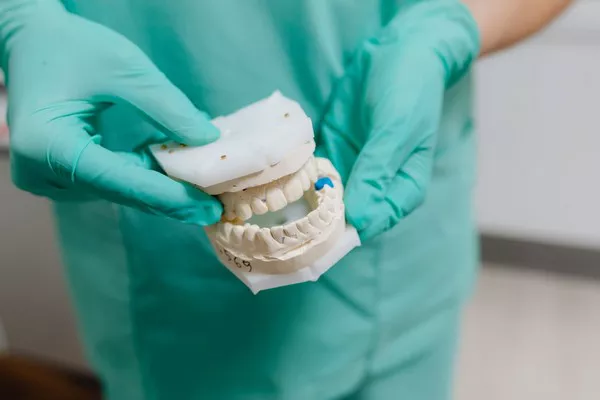Maintaining good oral health is essential for overall well-being and a confident smile. While regular brushing and flossing are crucial components of oral hygiene, they may not be sufficient to address all dental concerns. Deep teeth cleaning, also known as scaling and root planing, is a professional dental procedure designed to remove plaque, tartar, and bacteria from below the gum line. This article aims to provide a comprehensive guide on why deep teeth cleaning is necessary and how it contributes to optimal oral health.
Understanding Deep Teeth Cleaning:
Deep teeth cleaning involves a thorough cleaning of the teeth and gums, targeting areas that are difficult to reach with regular brushing and flossing. It consists of two main procedures:
a) Scaling:
During scaling, a dental hygienist or dentist uses special instruments to remove plaque and tartar buildup from the surfaces of the teeth, including both above and below the gum line.
b) Root Planing:
Root planing smooths the rough surfaces of the tooth roots to prevent the accumulation of bacteria and promote gum tissue reattachment. This process helps to reduce pocket depths and allows the gums to heal properly.
The Need for Deep Teeth Cleaning:
Regular dental cleanings and check-ups are crucial for maintaining oral health. However, there are specific situations where deep teeth cleaning becomes necessary:
a) Gum Disease (Periodontitis):
Gum disease occurs when bacteria-laden plaque and tartar build up along the gum line, leading to inflammation and infection. If left untreated, gum disease can progress to periodontitis, causing irreversible damage to the gums, bone loss, and even tooth loss. Deep teeth cleaning helps remove the bacterial buildup, control infection, and prevent further progression of gum disease.
b) Persistent Bad Breath:
Bad breath, or halitosis, can often be attributed to poor oral hygiene, plaque buildup, or gum disease. Deep teeth cleaning eliminates the underlying causes of bad breath by removing bacteria and tartar that contribute to oral odor.
c) Deep Pockets and Gum Recession:
In cases where pockets form between the teeth and gums due to gum disease, deep cleaning becomes necessary to remove debris, bacteria, and tartar from these hard-to-reach areas. This helps prevent further pocket deepening and gum recession.
d) Preparatory Treatment:
Deep teeth cleaning may be required as a preparatory treatment before other dental procedures, such as orthodontic treatment or restorative treatments like dental implants or crowns. It ensures a clean and healthy foundation for successful and long-lasting outcomes.
Benefits of Deep Teeth Cleaning:
Deep teeth cleaning offers numerous benefits beyond routine dental care. Some key advantages include:
a) Removal of Plaque and Tartar:
Deep cleaning effectively removes plaque and tartar buildup from the tooth surfaces and below the gum line, reducing the risk of cavities, gum disease, and tooth loss.
b) Improved Gum Health:
By eliminating bacteria and irritants, deep teeth cleaning promotes healthier gums, reduces inflammation, and prevents gum disease progression. Healthy gums are the foundation for strong teeth and an attractive smile.
c) Fresh Breath:
The removal of bacteria and debris from hard-to-reach areas during deep teeth cleaning helps eliminate persistent bad breath, resulting in fresher breath and improved confidence.
d) Enhanced Overall Health:
Oral health is closely linked to general health. Maintaining optimal oral hygiene through deep teeth cleaning can help reduce the risk of systemic conditions such as heart disease, diabetes, and respiratory infections.
e) Preserving Natural Teeth:
Deep teeth cleaning plays a vital role in preserving natural teeth by preventing gum disease and addressing early signs of dental problems. It can help avoid costly and invasive dental treatments in the future.
The Deep Teeth Cleaning Process:
Deep teeth cleaning is typically performed by a dental hygienist or dentist and involves the following steps:
a) Assessment:
The oral health professional will examine your teeth and gums, looking for signs of gum disease, pocket depths, and tartar buildup.
b) Local Anesthesia:
In some cases, local anesthesia may be administered to ensure patient comfort during the deep cleaning procedure, especially if there is advanced gum disease or deep pockets.
c) Scaling:
Using specialized instruments, the dental professional will carefully remove plaque and tartar from the tooth surfaces, including below the gum line.
d) Root Planing:
The rough surfaces of the tooth roots are smoothed out to discourage plaque accumulation and promote gum tissue reattachment.
e) Medications and Follow-up Care:
Antibacterial mouth rinses or localized antibiotic treatments may be prescribed to further control infection. The dental professional will provide instructions on post-treatment care, including recommendations for regular brushing, flossing, and follow-up visits.
Conclusion:
Deep teeth cleaning is a crucial aspect of maintaining optimal oral health. It goes beyond routine dental care by addressing underlying issues such as gum disease, plaque buildup, and persistent bad breath.
Related Topics:





























